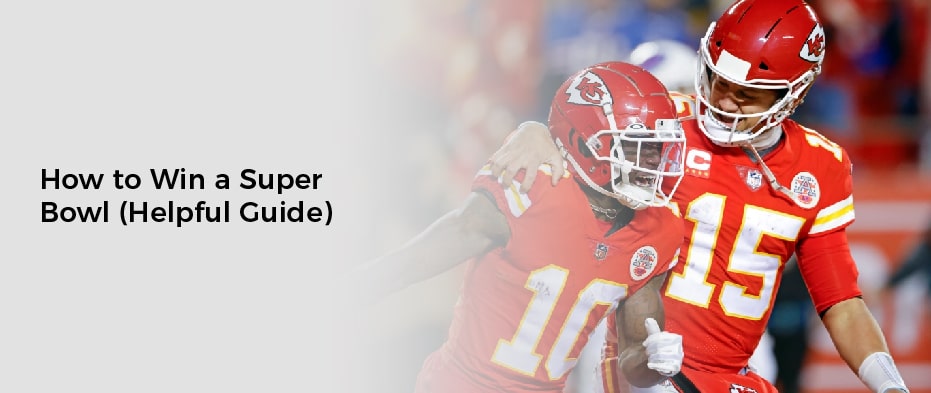The wing t offense represents a fascinating blend of old-school football wisdom and modern strategic thinking.
Born from the innovative mind of Pop Warner and refined to perfection by Harold “Tubby” Raymond at Delaware University, this offensive system has transformed countless teams from underdogs to champions.
Unlike many modern offenses that rely on spreading the field or pure power football, the wing t offense thrives on deception, precision, and teamwork.
Think of the wing t offense as a masterful chess game played on a football field. Every movement has a purpose, every fake creates opportunity, and every player’s role is crucial to success.
This isn’t just about running plays – it’s about creating an offensive symphony where timing, execution, and deception come together to keep defenses guessing and create scoring opportunities.
What makes this offense truly special is its ability to succeed without requiring exceptional athletic talent.
Teams running the wing t offense effectively can compete against more athletic opponents by emphasizing disciplined execution, precise timing, and strategic deception.
Wing T Offense

Whether you’re a coach looking to implement this system, a player trying to master it, or a fan wanting to understand it better, this comprehensive guide will take you through everything you need to know.
Key Takeaways
Core Principles of the Wing T:
Foundational Elements:
- Deception-based offense rather than power-based
- Emphasizes multiple threats from different positions
- Relies on precise timing and execution
- Creates defensive confusion through misdirection
- Builds on fundamental football skills
Strategic Advantages:
- Perfect for teams without dominant athletes
- Excellent teaching tool for football basics
- Creates multiple offensive threats
- Controls game tempo effectively
- Develops team-first mentality
Wing-T Formation: A Detailed Breakdown
Understanding the wing t formation requires looking at both its structure and the philosophy behind each position.
Basic Formation Structure:
Personnel Requirements:
QB – Quarterback (1)
FB – Fullback (1)
TB – Tailback (1)
WB – Wingback (1)
TE – Tight End (1)
SE – Split End (1)
OL – Offensive Line (5)
Position-by-Position Analysis Table:
| Position | Primary Role | Key Skills | Important Traits | Common Mistakes |
|---|---|---|---|---|
| Quarterback | Ball handling, play fakes | Quick hands | Decision making | Poor fakes |
| Fullback | Inside running, blocking | Power, vision | Toughness | Hesitation |
| Tailback | Outside runs, receiving | Speed, agility | Patience | Over-running blocks |
| Wingback | Misdirection, blocking | Versatility | Timing | Poor path discipline |
| Tight End | Blocking, short passes | Strength, hands | Balance | Weak-side release |
| Split End | Deep threat, blocking | Speed, route running | Discipline | Lazy blocking |
Formation Variations and Adjustments:
Strong Side Setup:
- Tight end and wingback create a power side
- Multiple blocking angles are available
- Natural running lanes develop
- Built-in play-action opportunities
Weak Side Elements:
- Split end provides vertical threat
- Creates defensive alignment issues
- Opens cutback lanes
- Enables quick-hitting plays
Famous Wing-T Offenses: Learning from the Best
The history of successful wing t offenses provides valuable lessons for modern implementation.
Professional Success Stories:
Kansas City Chiefs Era:
- Late 1970s adaptation
- Combined power and deception
- Created unique defensive problems
- Influenced modern variations
College Football Impact:
University of Delaware Dynasty:
- Coach Tubby Raymond’s innovations
- Multiple formation variations
- Advanced blocking schemes
- Sophisticated play-action passes
- Revolutionary practice techniques
Modern College Adaptations:
- Integration with spread concepts
- Tempo variations
- RPO (Run-Pass Option) additions
- Formation flexibility
High School Success Factors:
Implementation Keys:
- Emphasizes fundamentals
- Teaches football IQ
- Builds team cohesion
- Develops multiple skills
Wing-T Offense Strengths: Maximizing Advantages
Understanding the system’s strengths allows for better implementation and game planning.
Offensive Advantages Table:
| Advantage | Description | Application | Impact |
|---|---|---|---|
| Misdirection | Multiple fake options | Creates hesitation | Defensive confusion |
| Ball Control | Extended drives | Time management | Game control |
| Multiple Threats | Various running options | Forces base defense | Creates mismatches |
| Formation Flexibility | Different looks | Adaptation ability | Hard to prepare for |
Strategic Benefits:
Misdirection Elements:
- Counter plays create doubt
- Reverses exploit over-pursuit
- Bootlegs use quarterback mobility
- Play-action passes build off run game
Control Aspects:
- Time of possession advantage
- Defensive fatigue factor
- Field position game
- Score management ability
Wing-T Offense Weaknesses: Addressing Challenges
Understanding system limitations helps develop effective countermeasures and improvements.
Common Challenges:
Execution Issues:
- Timing precision required
- Complex ball handling
- Detailed footwork needed
- Practice time intensive
Strategic Limitations:
- Vertical passing game constraints
- Quick-strike capability
- Comeback situation challenges
- Modern defense adaptations
Personnel Considerations:
Skill Position Requirements:
- Specific quarterback abilities
- Versatile running backs
- Smart offensive linemen
- Disciplined receivers
Development Needs:
- Extended learning curve
- Detailed technique work
- Continuous refinement
- Team chemistry building
Running Play: Wing-T 21 Dive Mastery
This foundational play demonstrates core wing t principles in action.
Complete Assignment Breakdown:
Offensive Line Responsibilities:
- Left Tackle: Seal edge defender
- Left Guard: Double team nose
- Center: Down block right
- Right Guard: Pull and trap
- Right Tackle: Reach block end
Backfield Execution Details:
- Quarterback: Reverse pivot, fake
- Fullback: Lead block play side
- Halfback: Hit hole quickly
- Wingback: Seal edge defender
Success Metrics Table:
| Element | Key Point | Common Error | Correction |
|---|---|---|---|
| Timing | Synchronized movement | Early/late execution | Practice tempo |
| Fakes | Convincing action | Half-speed fakes | Detail focus |
| Blocking | Sustained contact | Early release | Finish emphasis |
| Running | Quick hole hit | Hesitation | Decisive cuts |
Passing Play: Wing-T Waggle Left Throwback Excellence
This sophisticated play showcases the formation’s passing potential.
Complete Route Tree:
Primary Receivers:
- Split End: Deep flag route
- Tight End: Deep crossing
- Wingback: Intermediate post
- Fullback: Flat release
- Tailback: Wheel route
Protection Scheme Details:
- Guards pull in sequence
- Tackles vertical set
- Center anchors middle
- Backs check protection
Quarterback Progression:
- Deep flag primary
- Crossing route secondary
- Post route tertiary
- Flat route crackdown
- Wheel route safety
Comparative Offensive Systems
Understanding how the wing t offense relates to other systems provides valuable context.
Offensive Systems Comparison Table:
| System | Core Strength | Main Weakness | Best Fit | Personnel Needs |
|---|---|---|---|---|
| Wing-T | Misdirection | Complex timing | HS/Small College | Disciplined players |
| Spread | Space creation | Protection issues | College/Pro | Speed athletes |
| Pro-Style | Versatility | Learning curve | Pro/College | Complete roster |
| Option | Run dominance | Passing limits | College/HS | Mobile QB |
| Air Raid | Passing game | Balance issues | College/Pro | Skilled QB/WR |
System-Specific Characteristics:
Traditional Power Offense:
- Straightforward execution
- Limited deception needs
- Power-based success
- Simple installation
Modern Spread Concepts:
- Space utilization focus
- Quick-strike capability
- Multiple personnel groups
- Complex read systems
Frequently Asked Questions About Wing T Offense
- Q: How long does a complete wing t offense installation typically take?
A: A basic installation usually requires one full offseason, while mastery often takes 2-3 seasons. The system’s complexity demands patient teaching and consistent repetition.
- Q: What type of players work best in this offense?
A: The wing t offense succeeds with smart, disciplined players who prioritize team success over individual statistics. While speed and size help, execution and understanding matter more.
- Q: Can the wing t offense handle modern defensive schemes?
A: Yes, absolutely. The system’s principles of misdirection and multiple threats remain effective against any defense. Modern adaptations have kept the system relevant and successful.
- Q: What makes the wing t offense different from other running offenses?
A: The wing t offense emphasizes deception and timing over pure power, using multiple backfield threats and precise execution to create defensive confusion.
Q: How does weather affect the wing t offense?
A: The offense typically performs well in adverse weather due to its strong running game foundation. However, wet conditions require extra focus on ball handling and exchange points.
Also Check:
Conclusion:
The wing t offense represents more than just a collection of plays – it’s a comprehensive approach to football that emphasizes teamwork, execution, and strategic thinking over raw athletic ability.
Its enduring success across different levels of competition proves that fundamentally sound football never goes out of style.
For coaches considering this system, remember that success comes from a commitment to teaching details, developing player understanding, and building a culture of disciplined execution.
Players must embrace their roles within the larger system and trust that their responsibilities contribute to team success.
The beauty of the wing t offense lies in its ability to make the whole greater than the sum of its parts.
When properly executed, it demonstrates that strategic thinking and teamwork can overcome seemingly superior athletic ability.
Whether you’re implementing this system or defending against it, understanding the wing t offense enriches your appreciation for football’s tactical depth and the enduring value of well-designed offensive systems.



